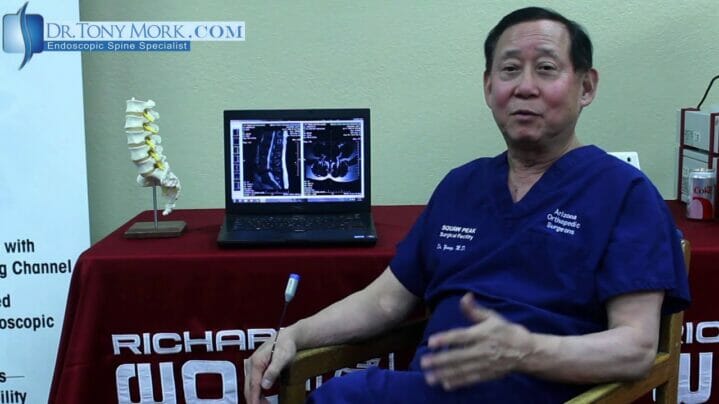Interview with Dr. Tony Yeung
DR. MORK: Recently I was asked some questions and I was going to ask for some clarification from Dr. Yeung about which branches of the dorsal primary rami could be divided safely for treatment of facet joint pain. There are three branches: There are the medial, intermediate, and lateral branches. People have asked me since the longissimus muscle and the multifidus are receiving innervation from these lateral branches, that maybe it is not appropriate to divide them. What is your thought about this?
DR. YEUNG: I would target the medial branch as the one causing the facet joint pain mostly, but if I see the intermediate and lateral branch, there are a lot of people with facet pain that have muscle spasm, and so I would eliminate the innervation that causes involuntary muscle spasm. It is not necessarily bad, because it is not enough to denervate the muscle, it is only enough to decrease the severity of muscle spasm addition to the facet pain. So a lot of doctors will prescribe muscle relaxants and pain pills or injections. This way you are taking care of both.
DR. MORK: Ok, and what about the levels, the lower levels L4-5, L5-S1, maybe L3-4? Can you do all the levels in the spine, or what levels are these actually good for?
DR. YEUNG: All levels. I start at L4-5 and 1, and most of the time, maybe 80% or 90% of the time they are satisfied. Sometimes some of the pain comes back. I would then consider ablating the nerves at L1-2, L3. There is some literature that says that all afferent fibers from the lower levels are collected at the dorsal ganglia at L2, so theoretically if you just block L2, you get everything below. That does not work for practical purposes. If I get enough relief at L4-5, I would just stop there. If they still have some trouble occasionally, I would go to L1-2, and 3. That provides additional relief but is not as consistent as L4-5, and 1 because the dorsal ramus sends the branches at a different angle. It doesn't follow the textbook. The medial branch sometimes misses going across the spinous process; because of the anatomy it goes into the facet joint before it crosses the spinous process or is high enough that we miss getting the nerve at the base of the spinous process. So in that case, more likely, I would try to denervate the facet wall at the same time.
DR. MORK: Ok, and usually though the rhizotomy would be preceded by some type of block where you could determine success?
DR. YEUNG: Yes, I would do a medial branch block but not the way that IITTSS or the injection people want to have them validated. Their technology is different. They use a little thin wire they have to put at a specific spot, but in my opinion and my experience, having done multiple dissections, 30% of the time the nerve is not even there, so at the best they are going to get 70% success, but in reality they will get less than 50% because the nerve unit, if it is there, it could be missed or it could be protected by an osseous tunnel, protected by bone and scar tissue, and the little wire is not enough to ablate the nerve. You have to then strip all the soft tissue from the bone in order to be able to get the nerve.
DR. MORK: Just out of curiosity, when doing these endoscopically under direct vision, how often do you visualize the nerves?
DR. YEUNG: I visualize it maybe half the time. If I don't see it, then I would spend more time to go up the wall of the facet because the nerve has to go past the facet in order to get to the joint.
DR. MORK: Yes.
DR. YEUNG: And, sometimes the nerve is small; sometimes it is caught in scar tissue, and if I would try and dissect it, I don't need to. I just need to know that if I ablate the nerves as they traverse this area to the facet, I will get it most of the time. Not 100%, but about 90% of the time.
DR. MORK: Ok, sounds great. Thank you very much. It is a pleasure to be here at IITTSS this week, and I look forward to our next get together.
DR. YEUNG: Thanks for coming. I am getting to know you very well. You have been a very good participant of the workshops and eventually I think you will be as good or better than many of the faculty.
DR. MORK: I appreciate it, thank you very much.
Well, I hope you enjoyed Dr. Yeung and his really thorough and excellent comments on this particular procedure. If you have any further questions, don't hesitate to contact me or Dr. Yeung.
